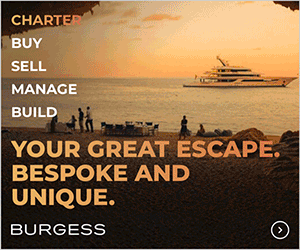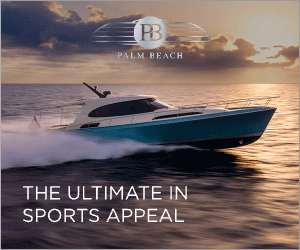Sleep with the fishes
Reefworld is the most incredible accommodation, where you can sleep underwater surrounded by marine life.
Written by Rebecca Weisser
Photography by CWS Experiences
16 August 2023
If you’ve seen Francis Ford Coppola’s classic The Godfather, you probably don’t want to sleep with the fishes, mafioso for finding a final resting place in an unmarked watery grave.
At Hardy Reef, however, 40 nautical miles northeast of Airlie Beach you can sleep with the fishes and wake up to tell the tale. That’s because Hardy Reef is the home of Reefworld, a hotel built on a pontoon on the Great Barrier Reef.
The two Reefsuites are accessible by a steep staircase and are completely submerged underwater. Floor-to-ceiling glass windows turn the bedroom into a giant aquarium. The twist is that the guest is in the glass box and curious marine creatures stop for a sticky beak.
One enormous fellow that is likely to pass by is George the Queensland Grouper (pronounced groper), a giant spotted cod who weighs about 300 kg. That makes him only a middle-sized grouper as they can grow up to 3 metres in length and weigh up to 600 kgs. You can rest easy because George is not known for groping, he just likes to hang out underneath the pontoon.
Another plus-sized fish that you are likely to see is mild-mannered Max, the Maori wrasse. Maori wrasse have fleshy lips and a big hump on their heads. They can grow to 2.3 metres in length and weigh up to 190 kg.
These gentle giants stay close to their home reef and are so friendly that they will nuzzle up against a diver and welcome a tummy rub. One of the most extraordinary characteristics of this fish is that some of the females turn into males when they reach about nine years. So one of these days, Max may become Maxine?
If you decide not to sleep in the aquarium, there are glamping-inspired Reefbeds on the top deck of the pontoon where you can sleep over the reef and under the stars.
A reefbed is queen size bed with a weatherproof outer cover and an inner mosquito net. Both zip up to create a cosy bed with fresh linen its own bedside lamp and fans.
And, just because you aren’t sleeping in the aquarium, you don’t have to miss out on the underwater world. There’s a semi-submersible boat with floor-to-ceiling glass walls so that you can be immersed in the marine world without getting a hair wet.
You can snorkel on your own or join a guided snorkelling safari. The pontoon has a collection of quality wet suits, masks, snorkels, and fins in every size including prescription glass for those who wear glasses. Even if you have never done any scuba diving in your life, you can learn the basics and go out with a fully qualified diver holding your hand.
Whichever way you choose to go beneath the waves, you will almost certainly see large schools of slender needlefish like long thin darts and broader silver fish with bright yellow tails called fusiliers.
Out among the anemones are little clownfish with yellow bodies and blue stripes. Parrotfish have a beak-like mouth. Listen to them munching on coral. Between July and September, humpback whales pass by on their way south.
After a day of immersing yourself in the tropical water, wash the salt off and enjoy sunset drinks. If you’d like to sup with the fishes that’s not a problem. Full fathom five the diner lies in an underwater observatory where you can have a romantic dinner for two, or a small group.
After a night under the sea or the stars, there’s time for a final dip. Travel to and from the pontoon on Seaflight, a large catamaran. Or take an awe-inspiring scenic flight back to Hamilton Island in a helicopter with floor-to-ceiling windows. (Optional upgrade). From 500 to 1,000 feet in the air, it’s easier to see the remarkable topography.
Only 10,000 years ago, the Whitsunday Islands were a mountain range on the Australian mainland. Hardy Reef and neighbouring Hook Reef were the tops of a gorge with a river running between the two.
At the end of the last Ice Age, when the glaciers melted, the Coral Sea flooded the Queensland coast, and the Whitsunday mountain range became the Whitsunday Islands.
Hardy is one of the closest coral reefs to the Whitsunday Islands. It was only just submerged and became the home of tiny coral polyps. Similar to minute jellyfish or sea anemones, coral polyps create a protective limestone skeleton. Over millennia these tiny creatures created the Great Barrier Reef.
On leaving the pontoon, fly over the heart-shaped Heart Reef with a helicopter optional upgrade. Not long after Whitehaven Beach appears, with its 7 km arc of brilliant white silica sand. The opalescent colour of the shallow water is created by fine sediment that scatters the sunlight.
This is Whitsunday Island, the largest in the archipelago. Not long after, land at Hamilton Island. Go for a trail walk amidst agile wallabies, goannas, possums, sulphur-crested cockatoos, and kookaburras. Finish the day with Asian fusion share plates at Coca Chu overlooking Catseye Beach, and when you go to sleep, dream of the fishes.
The writer was a guest of Journey Beyond.
Industry value verified












